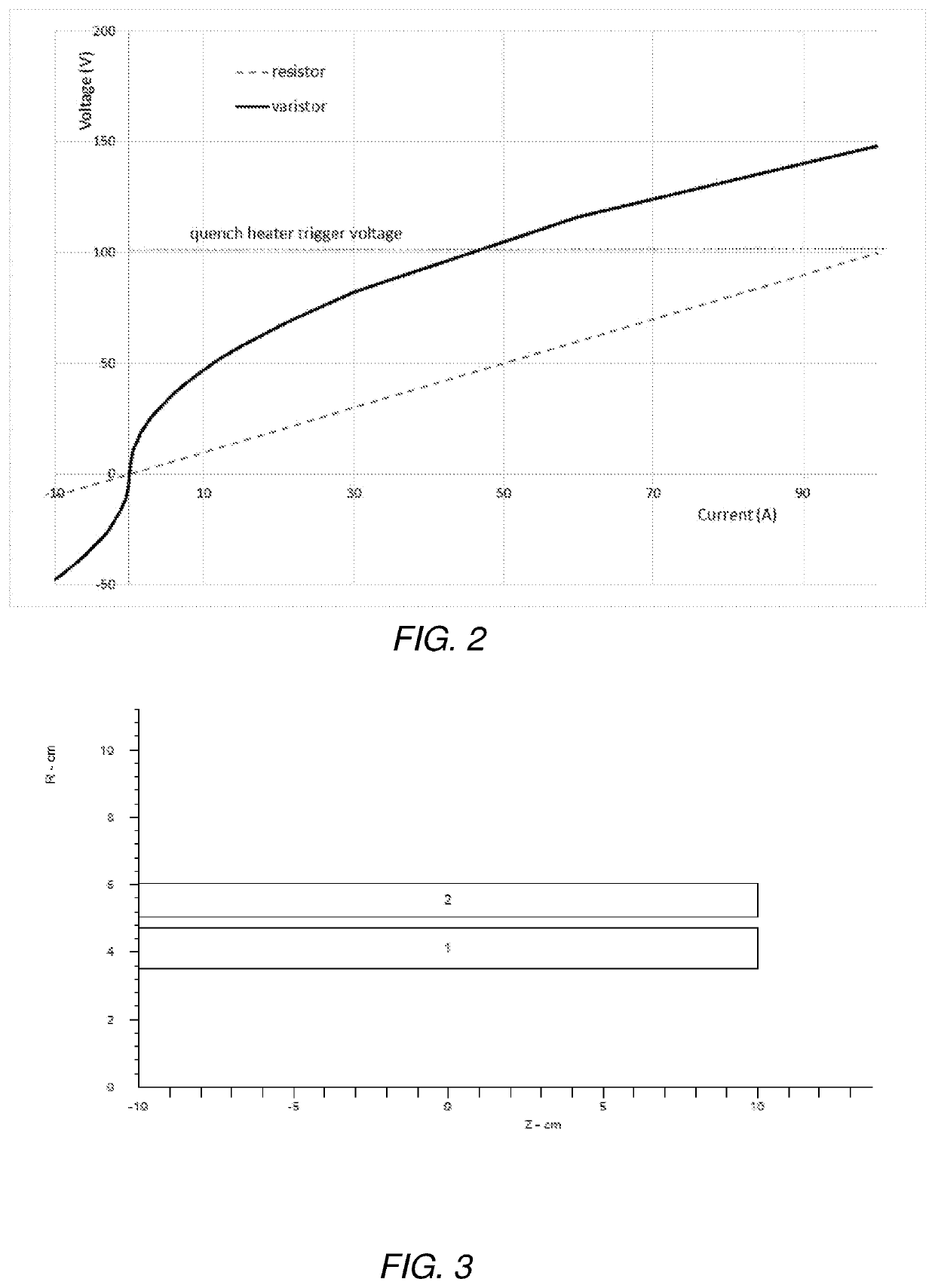Quench protection arrangement
- Summary
- Abstract
- Description
- Claims
- Application Information
AI Technical Summary
Benefits of technology
Problems solved by technology
Method used
Image
Examples
Embodiment Construction
[0055]Quench modelling has been performed in order to demonstrate the capabilities of varistors in quench protection arrangements. For simplicity, and in view of the propensity for more complex modelled scenarios to render less clear the effect of the varistors or lead to systematic modelling errors, a simple, two-coil design has been used to test the concept. This is for illustrative purposes only, and it is envisaged that the quench protection arrangement may be implemented with any number of magnet coils. Computer software has been used to model the coil configuration and quench modelling.
[0056]FIG. 3 shows a cross-section through one half of the cylindrical coils as modelled in this general example. The coils are shown as cylindrical blocks centred on R=0 (corresponding to the y axis in the figure) and extending in the z direction (parallel with the x axis in the figure). Both coil 1 and coil 2 consist of NbTi wire of the same size and the coils have been chosen to have comparab...
PUM
 Login to View More
Login to View More Abstract
Description
Claims
Application Information
 Login to View More
Login to View More - R&D
- Intellectual Property
- Life Sciences
- Materials
- Tech Scout
- Unparalleled Data Quality
- Higher Quality Content
- 60% Fewer Hallucinations
Browse by: Latest US Patents, China's latest patents, Technical Efficacy Thesaurus, Application Domain, Technology Topic, Popular Technical Reports.
© 2025 PatSnap. All rights reserved.Legal|Privacy policy|Modern Slavery Act Transparency Statement|Sitemap|About US| Contact US: help@patsnap.com



